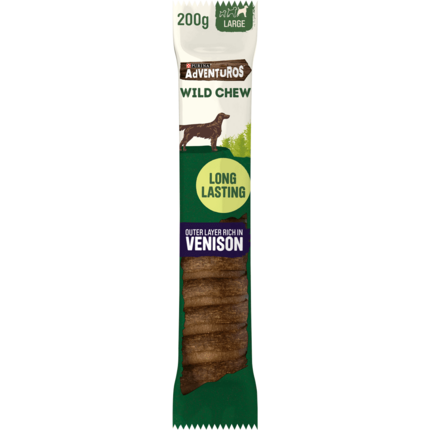Liver Disease in Dogs: Symptoms and Treatment



The liver is one of the most important organs in your pup’s body. It is so vital that unfortunately many of the liver diseases in dogs can end up being life-threatening, especially without medical attention. What’s even worse is that many of the symptoms of liver failure in dogs can be easily missed or mistaken for other more manageable diseases.
So, what does this mean for owners? Together with the help of our vets, we’ve put together a guide for dog owners looking to learn more about liver disease, its symptoms and possible treatment options.
Keep reading to find out how to recognise the signs of liver disease, and why it’s so important to contact your vet straight away.
What is liver disease in dogs?
Liver disease is a condition where the liver stops functioning as normal, creating a range of symptoms. There are two types of liver disease in dogs: chronic (the illness has a gradual onset) and acute (a sudden liver failure which needs urgent medical attention).
The liver has many essential functions, including removing toxins, storing vitamins, supporting digestion and helping blood clotting. But if the liver is affected by liver disease, these important functions stop happening properly which can make your dog sick.
What are the symptoms of liver failure in dogs? 10 signs to watch out for Unfortunately, liver problems don’t come with a specific set of signs, and there may even be no visible signs in the early stages, which can make initial detection quite difficult. Some of the symptoms that accompany liver disease in dogs can include:
- Loss of appetite
- Weight loss
- Vomiting
- Diarrhoea
- Lethargy
- Excessive thirst
- Peeing more often
- Yellow skin, whites of eyes and gums
- Disorientation
- Seizures
- Fluid retention in the abdomen
If you notice any unusual signs or changes in your dog’s behaviour, it’s always best to get in touch with your vet straight away, even if it proves to be nothing to worry about. Early detection of illnesses such as liver disease could mean improved chances for a better outcome.
What causes liver disease in dogs? There are many factors that can lead to liver failure in dogs which makes this disease quite unpredictable. Some of the most common causes include:
- Viral, bacterial or fungal infections
- Genetics
- Dog diabetes
- Toxic substances
- Cancer of the liver
- Trauma to the liver
- Certain medications
- Immune problems
- Storage diseases (metabolic disorders)
Are certain breeds of dogs predisposed to liver problems?
A few dog breeds such as Golden Retrievers, German Shepherds and Yorkshire Terriers are prone to copper storage disease which can lead to liver issues.
In this condition, the body doesn’t metabolise copper normally, which in turn causes copper to build up in the liver, damaging the organ. Genetics is the main factor causing the abnormal copper accumulation, so if you are considering purchasing a puppy, you should know that the dog’s parents can be tested for the mutant gene that is causing this health issue, which can help prospective owners to determine the likelihood of their pup inheriting this condition.
How is dog liver disease treated?
Although liver disease is a serious illness, its progression can sometimes be stopped or slowed. First, your vet will perform a physical examination and take a history from you. After this they may run a series of tests including abdominal x-rays, ultrasound, urine tests, blood tests and, in certain cases, they may even suggest surgical exploration of the abdomen which may involve taking biopsy samples of the liver. These tests are intended to help the vet establish the cause of the illness and help them plan the necessary treatment, which may include:
- Changes in diet, including the control of copper intake
- Supplements that support liver function
- Antibiotics if a bacterial infection has been identified
- Medication that helps manage symptoms such as vomiting
- Anti-inflammatory or pain relief medications
- Surgery or chemotherapy might be necessary if cancer is detected
Can liver disease be prevented?
Fortunately, owners can help decrease the chances of liver problems causing trouble for their pups. A healthy dog diet is one of the best ways to keep the liver working as it should. If you’re not sure whether your dog’s diet is healthy or not, it’s best to speak to your vet who will be able to advise you on this. Keeping infections at bay is also key – making sure your pet is up to date with all the core dog vaccinations can be really important in preventing liver disease caused by viruses such as canine adenovirus type 1, which can cause canine infectious hepatitis.
Ultimately, the most important thing a dog owner can do is to always book regular vet check-ups (as advised by your veterinary practice), familiarise themselves with the early symptoms of liver disease in dogs and always contact their vet if they notice any abnormal or unusual symptoms in their pup. Prompt intervention can make the disease more manageable and reduce the chances of it developing.
Dog owners should also bear in mind that toxic substances are one of the main causes of liver failure in dogs, so it’s important to protect your pup, and not expose them to harmful plants, foods and other substances. If you’re unsure what’s safe for your dog, we’ve prepared a handy list of poisonous plants and toxic foods for dogs so you can keep a watchful eye on your pet and eliminate any potentially harmful substances from your home. And if you’re ever unsure if something your dog has already eaten is safe for them, it’s always best to contact your vet straight away for further advice.
Explore our dog brands:
Related articles:















